Burton Albion’s Pirelli Stadium hosted the reigning Carabao Cup holders Manchester City in the second leg of the semi-final. Holding a decisive 9-0 win from the first leg, City had arguably already booked their ticket to Wembley for the final. The second leg offered little to play for. With other objectives at hand, both managers could risk experimenting tactics that will be elaborated upon in this tactical analysis.
After piling big wins over Rotherham and EFL League One side Burton at the Etihad, City became the highest scoring side in Europe. City manager Pep Guardiola explicitly stated in the pre-match press conference that his objective was to diagnose his system’s weaknesses.
“Every single game can help us improve what we want to do. Depending on how they defend, we find the spaces and try to attack more fluently through our principles and methods.”
Burton manager Nigel Clough expressed pride that his supporters would enjoy seeing some of the best players in the world. This opportunity might not come to the Pirelli Stadium ever again. Little would he have envisioned that his very own Burton players would display one of their finest performances this season.
Guardiola’s experimentation
Clough and Guardiola shared an acquiescent relationship from the first leg. They virtually agreed on a gentlemen’s pact after the result of the first leg. Guardiola took big risks with his tactical experiment as a consolation to save Burton from another gigantic defeat.
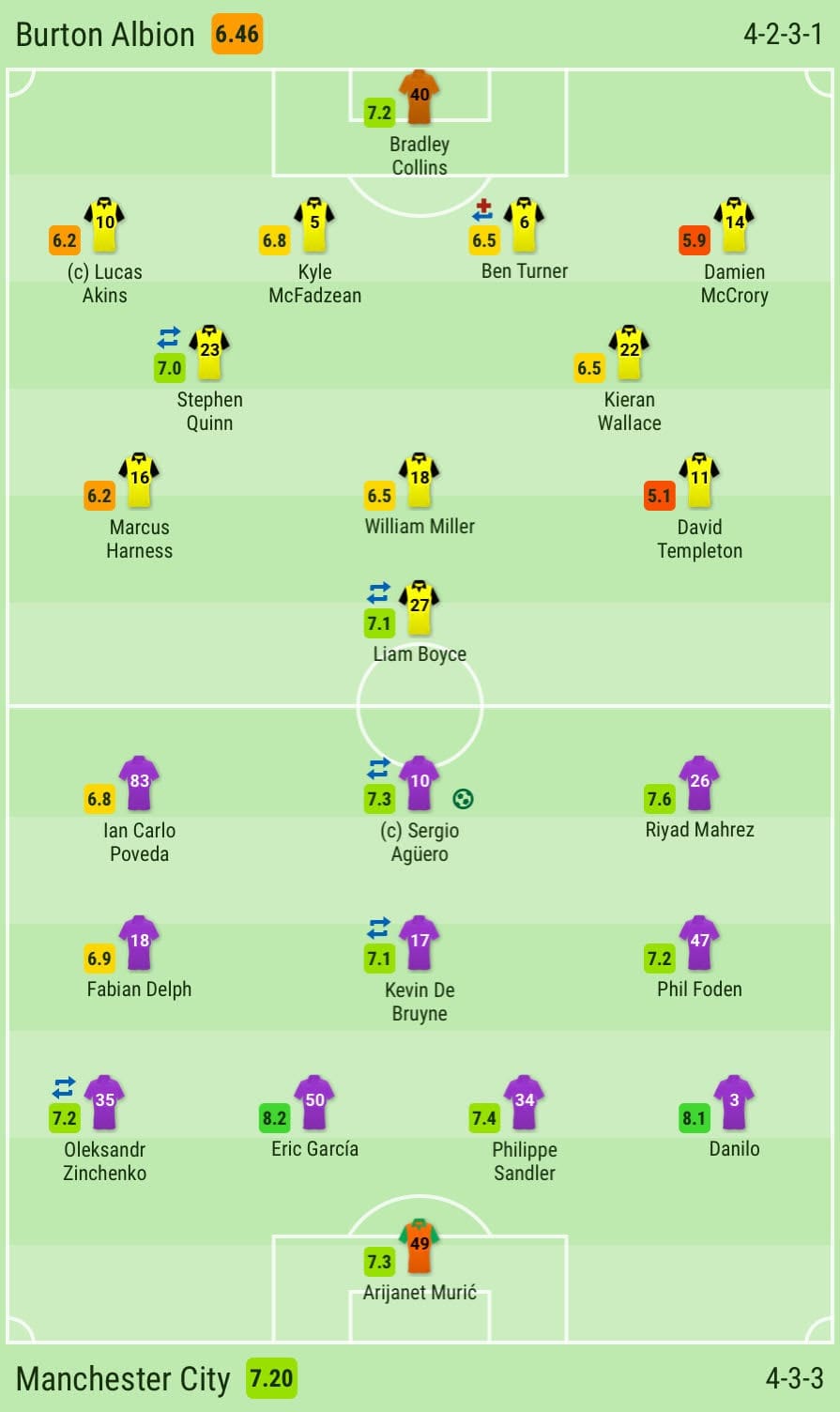
He chose Philippe Sandler, who had only played 23 minutes of first-team football, to partner Eric Garcia at centre-back. This decision was debatable, considering how last season’s “superman centr-back” Nicolás Otamendi has been complaining about his lack of minutes. Danilo was the most experienced of the back four, and this influenced City’s tactical set-up.
Guardiola picked 18-year-old Ian Poveda-Ocampo from the under-23 squad as the left winger in his standard 4-3-3. With Fabian Delph working alongside De Bruyne for defensive security, most of the attacking link-up rested on Phil Foden’s shoulders. In this set-up, the pressure to score was clearly on Riyad Mahrez, whose absence in the previous fixtures has raised eyebrows.
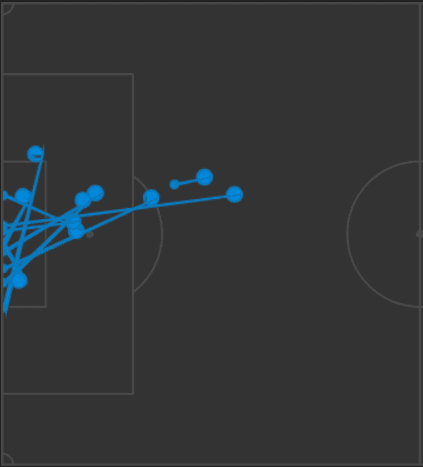
City’s improvisation and multi-tasking
Kevin De Bruyne filled in the role of the holding midfielder traditionally played by Fernandinho. Although comparable in terms of experience, De Bruyne has a very different profile as a central midfielder. He likes to enjoy the freedom to position himself where he can impact the game the most.
With the responsibility of covering two inexperienced centre-halves, he was very limited and looked uncomfortable required to do the dirty job of a defensive midfielder. Nevertheless, he registered a brilliant key pass that culminated in the only goal of the game.
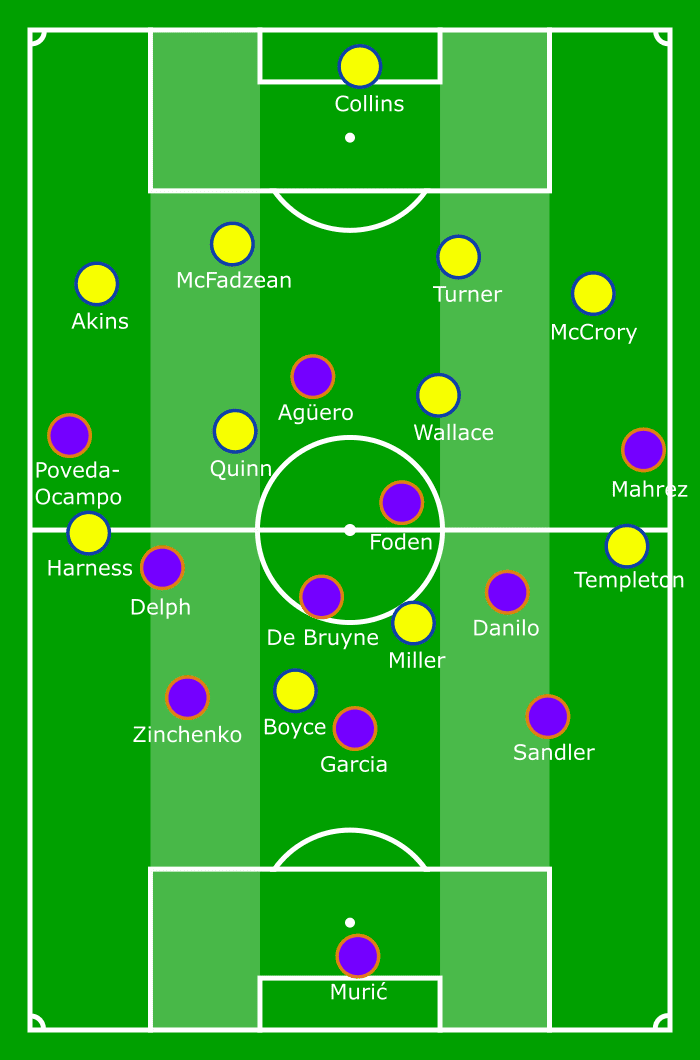
During possession, City shaped up mostly as a 3-3-1-3 with Danilo, Delph and De Bryune linking up and offering defensive cover when required. Garcia was the only true centre-back of the improvised back-three as Zinchenko and Sandler often overloaded the midfield, joining the attack.
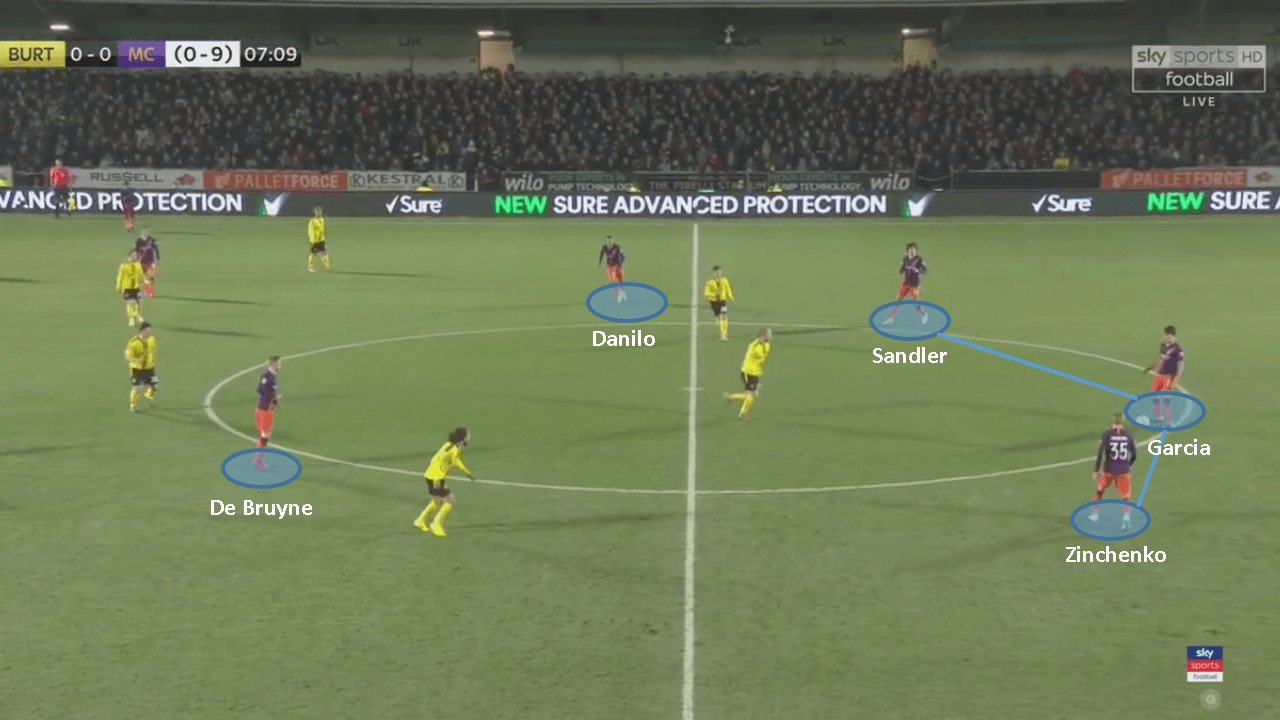
Guardiola was more focused on sticking to his principles of positional play during this game. He used the one-goal lead in the first half to fine-tune movements such as playing out from the back, and sitting in a stable attacking shape.
City often faltered taking these risks as very few progressions from the back were clean. Attempts to thrive in attacking phases were also in vain, as they found themselves rushing to transition defensively most of the time. Possession swapped hands frequently with both teams losing the ball an even 38 number of times.
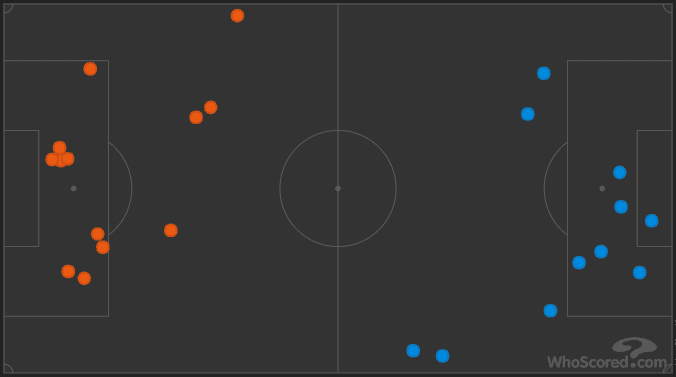
Burton’s rising confidence
Burton Albion looked timid for the first 20 mintues, with flashes of the first-leg battering holding them back. As City’s experiment forced errors, however, Burton’s confidence steadily picked up. Stephen Quinn and Kieran Wallace applied greater pressure in central midfield, winning their duels and raising the bar for young Phil Foden.

There are two circumstances when an opponent naturally manifests dominance. Barcelona’s stunning 6-1 win over PSG was a prime example of when a side has absolutely everything on the line to win. The second example was Burton, coming off a 10-0 aggregate deficit at half-time with absolutely no pressure to lose. Clough instructed his players to press higher up and take bigger risks coming into the second half.

Marcus Harness and David Templeton stretched the play wider and pinned City’s back three. With William Miller playing second striker to Liam Boyce, Burton looked more of an attacking 4-4-1-1 in the second half. The risks did pay dividends as Arijanet Muric left his goal wide open on two instances with only Garcia coming in the way of Burton’s possible equaliser. Had Burton’s forwards been ever so slightly more clinical in their finishing, they would have created a spectacle at the Pirelli Stadium.
Divided objectives missing the mark?
Generally, sides that face City choose to sit deep, offering City the opportunity to meticulously unlock the low block. But Burton pressed high aggressively as the game progressed leaving themselves widely exposed to counters. Should Guardiola have concentrated on exploiting these opportunities to transition into attack rather than being rigid with his players adapting to his methodology?
Delph and Zinchenko were offered a big stage to raise their game with City’s tactical improvisation. Although Delph did a decent job by means of work rate and positioning, Zinchenko’s performance was a bit lacklustre. Considering the tremendous form that he has exhibited in last few games, expectations were higher.
Danilo deserved the man-of-the-match award for extensively covering the defence while playing as an inverted full-back. Sandler’s performance was commendable with Burton’s high press in the second half. But by comparison, Garcia enjoyed an outstanding game at centre-back, with many commendable moments.
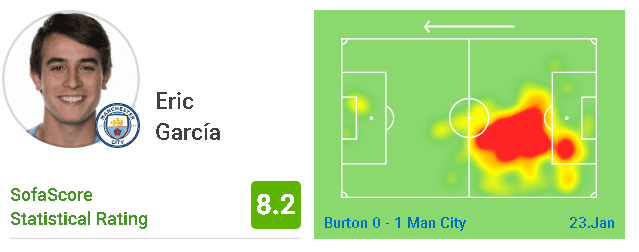
Conclusion
Manchester City indeed approached the game professionally with a plan in mind. They secured an early goal through a foresighted transition play from their experienced three and focused on rehearsing positional play. However, full points to Burton for their tenacious display to justify their spot in the semi-final and their incredible run as a third-tier outfit. Nigel Clough’s side indeed stood eye-to-eye with Guardiola’s City at the final whistle with their exciting football in what would have almost been a David versus Goliath recap.
If you love tactical analysis, then you’ll love the digital magazines from totalfootballanalysis.com – a guaranteed 100+ pages of pure tactical analysis covering topics from the Premier League, Serie A, La Liga, Bundesliga and many, many more. Buy your copy of the January issue for just ₤4.99 here, or even better sign up for a ₤50 annual membership (12 monthly issues plus the annual review) right here.

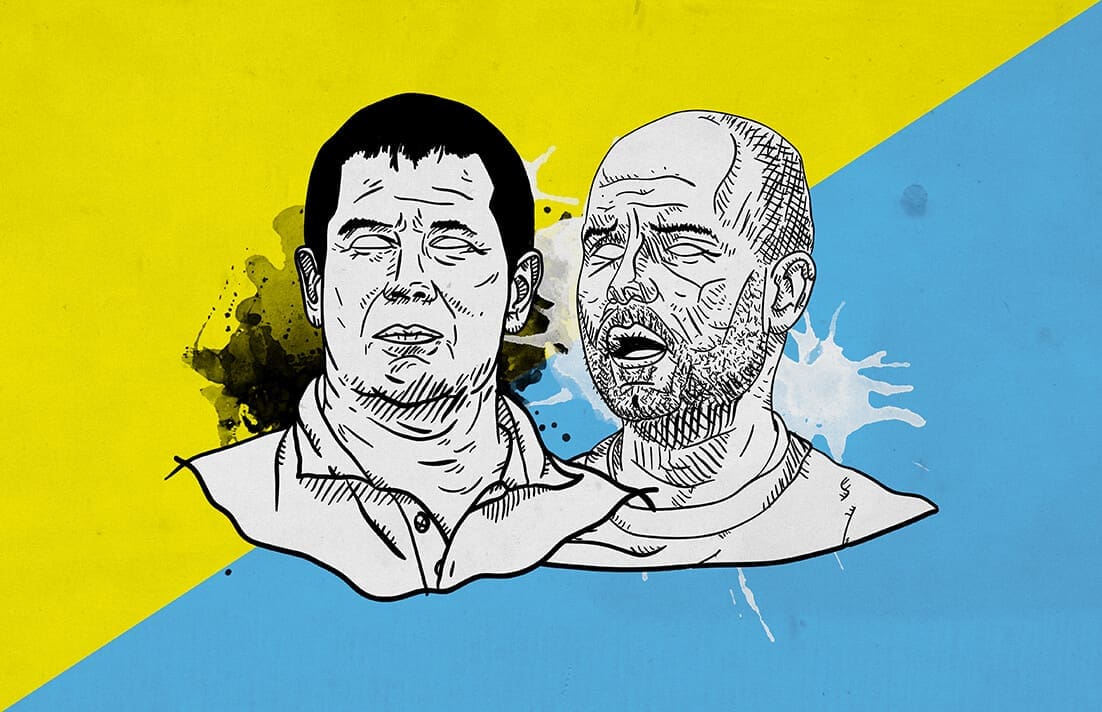
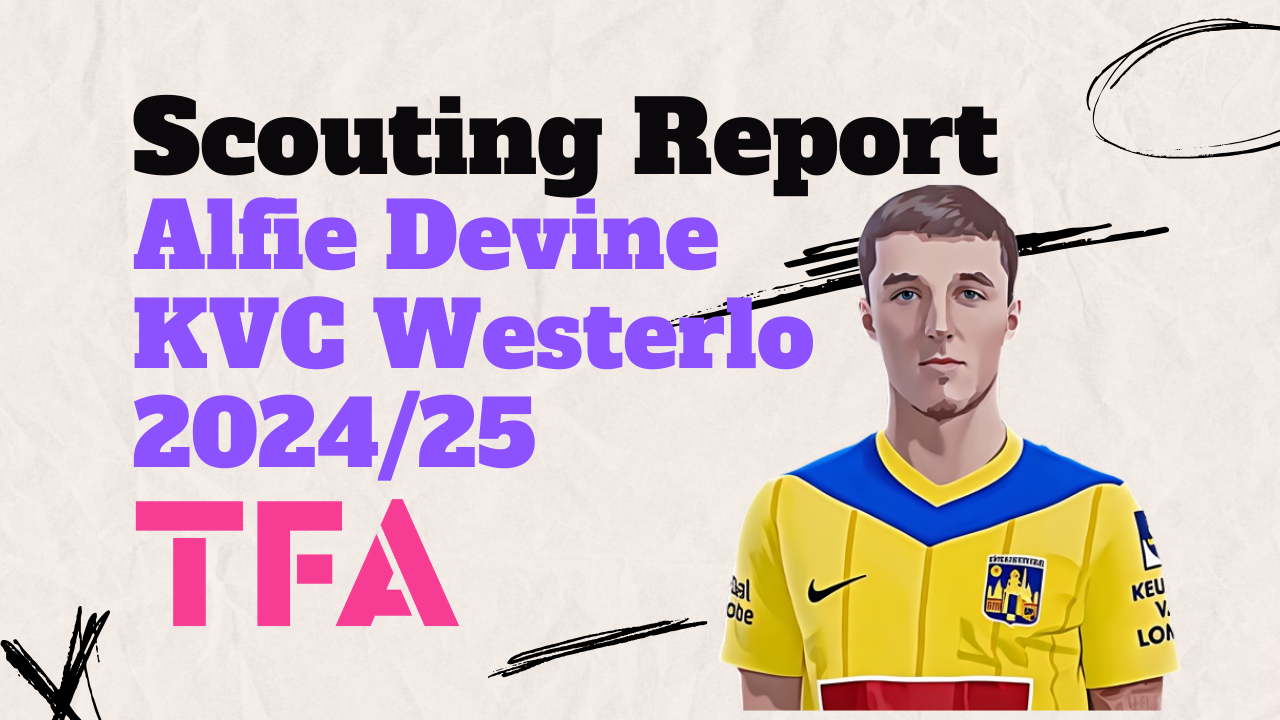
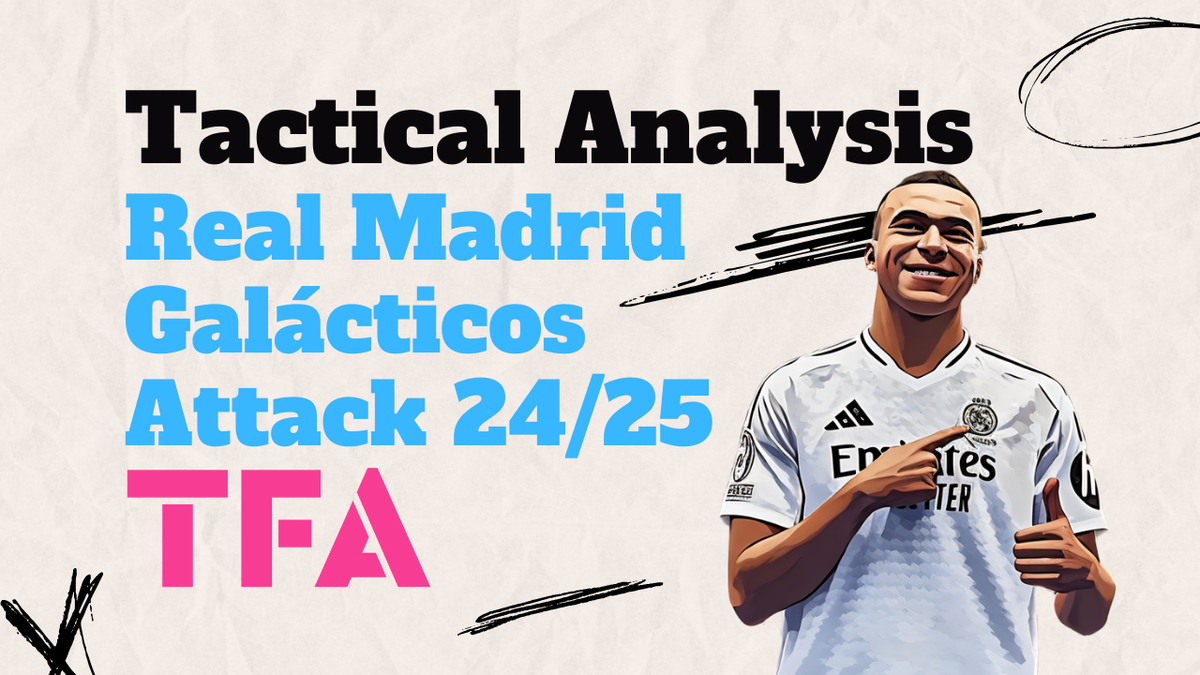
Comments